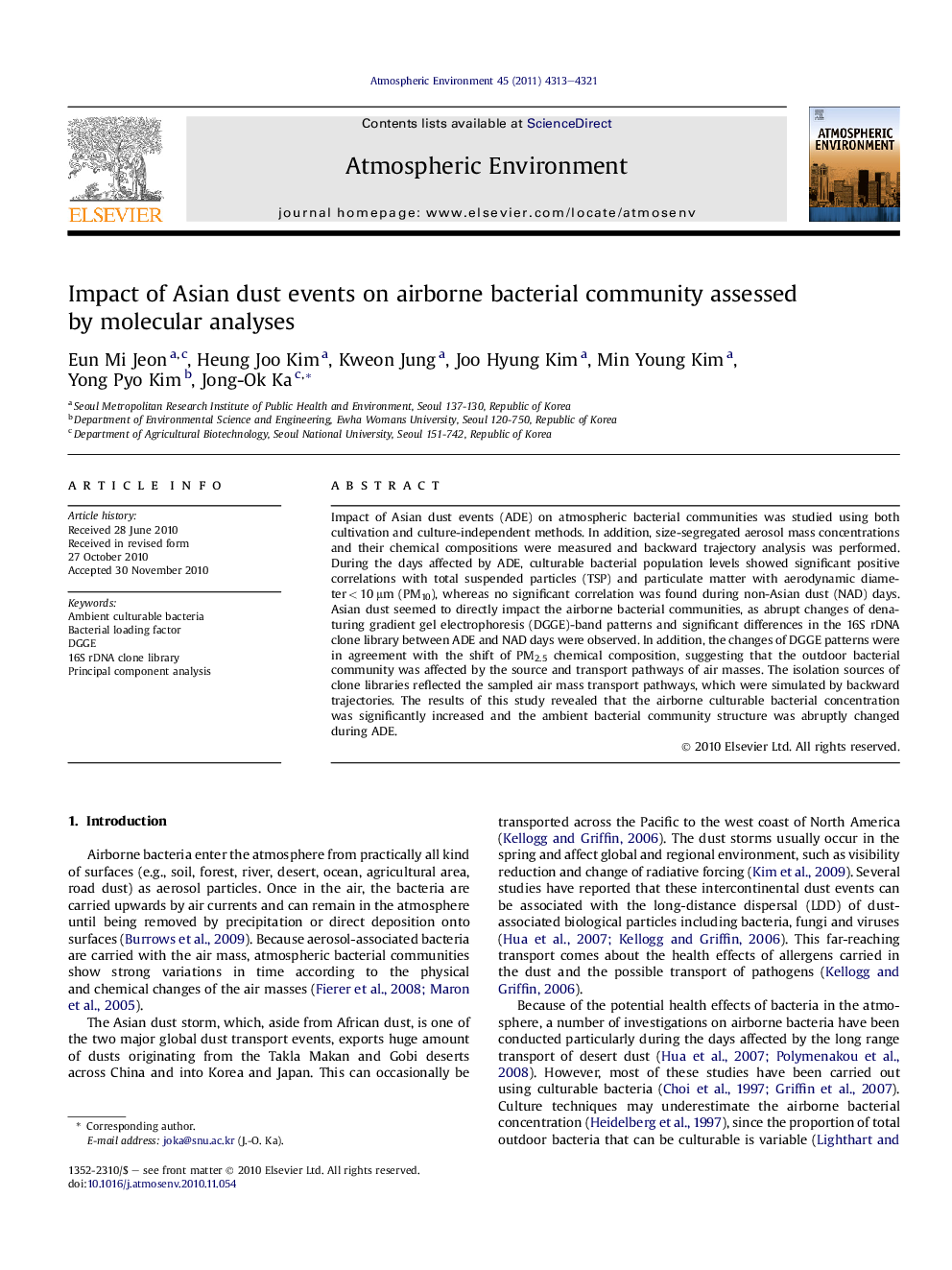| Article ID | Journal | Published Year | Pages | File Type |
|---|---|---|---|---|
| 4439555 | Atmospheric Environment | 2011 | 9 Pages |
Impact of Asian dust events (ADE) on atmospheric bacterial communities was studied using both cultivation and culture-independent methods. In addition, size-segregated aerosol mass concentrations and their chemical compositions were measured and backward trajectory analysis was performed. During the days affected by ADE, culturable bacterial population levels showed significant positive correlations with total suspended particles (TSP) and particulate matter with aerodynamic diameter < 10 μm (PM10), whereas no significant correlation was found during non-Asian dust (NAD) days. Asian dust seemed to directly impact the airborne bacterial communities, as abrupt changes of denaturing gradient gel electrophoresis (DGGE)-band patterns and significant differences in the 16S rDNA clone library between ADE and NAD days were observed. In addition, the changes of DGGE patterns were in agreement with the shift of PM2.5 chemical composition, suggesting that the outdoor bacterial community was affected by the source and transport pathways of air masses. The isolation sources of clone libraries reflected the sampled air mass transport pathways, which were simulated by backward trajectories. The results of this study revealed that the airborne culturable bacterial concentration was significantly increased and the ambient bacterial community structure was abruptly changed during ADE.
► Airborne culturable bacterial concentration was increased during Asian dust events. ►Abrupt shift of DGGE patterns from non-Asian dust day to Asia dust day were observed. ► Changes of DGGE patterns coincided with the shift of PM2.5 chemical composition. ► Isolation sources of clone libraries reflected the air mass transport pathways.
